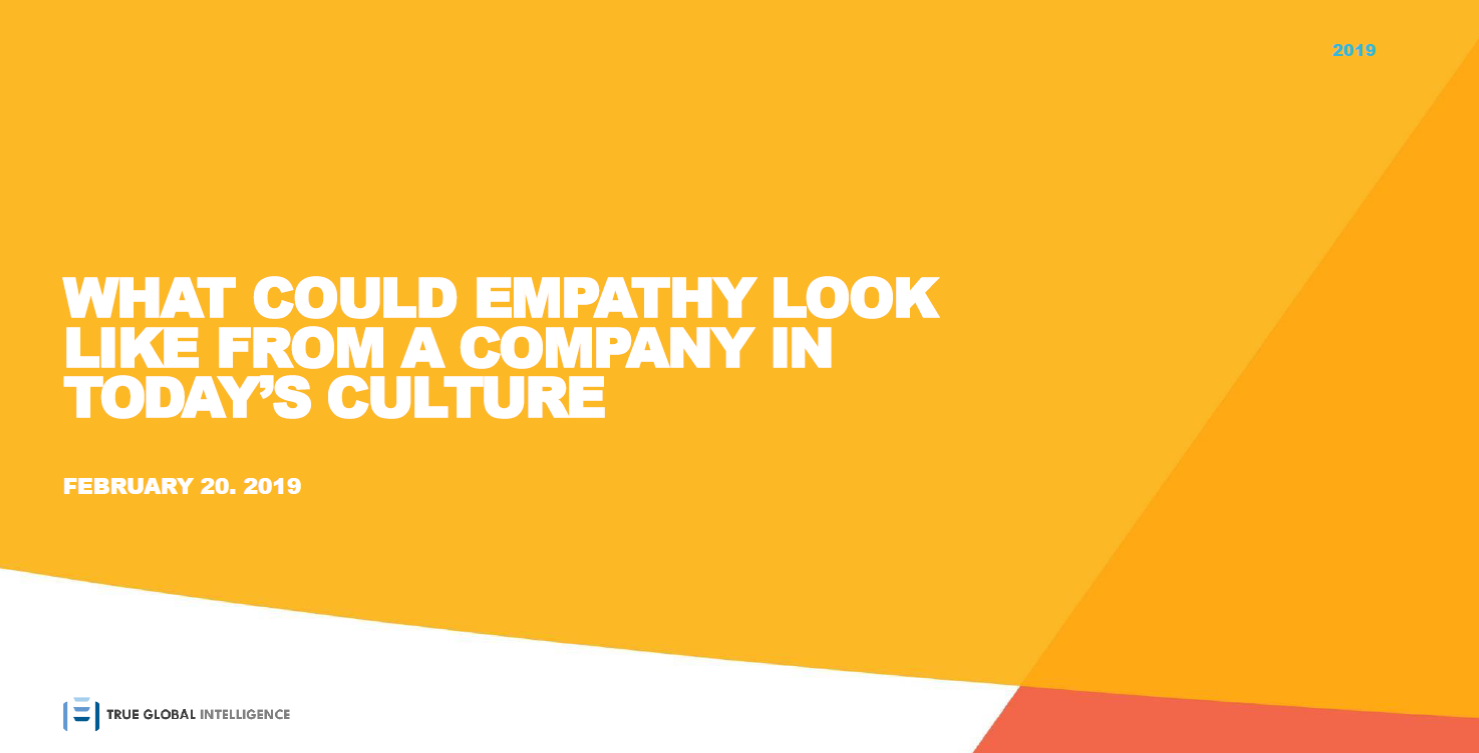Desperately Seeking Empathy – What Could Empathy Look Like from a Company in Today’s Culture?
Despite what we’re seeing politically and the increasing vitriol on social and traditional media, it is incorrect to assume that we’re careening toward a compassionless future. There is evidence to suggest that empathy is an emerging societal need.
We see evidence of empathy in action, though it may not get as much media coverage as it deserves, from everyday people all around us. It is people, not the corporate world, leading on the empathy front. Perhaps taking their cue from people – their consumers – organizations are starting to see the need for empathetic leaders.1 Social media makes the corporate world increasingly immediate and intimate, adding pressure to corporations to be truly responsive and empathetic.
Bianca McCann, Chief Human Resources Officer at BetterWorks, has studied the subject of empathy in the office. She noted that “having powerful empathetic conversations is a critical piece of being a great manager, and to truly hear the employee, deep listening and suspended judgment are needed skills. Yet in the busy world in which managers are entrenched, both of these skills are a real challenge.2
How Can Companies Show Empathy?
While there has been a lot of talk and research on the qualities of empathetic leaders, what does it mean for companies to show empathy and what do consumers expect? Based on research that we conducted on the qualities of empathetic leaders, we identified seven qualities that companies should have to be considered empathetic. We then surveyed 1,000 Americans online between May 21 and May 25, 2018. We found most Americans feel that all of the following qualities are extremely or very important to a company being considered empathetic, setting a high bar for corporate expectations:
- Kindness – Lead from the heart and use the kindness of their spirit in how they treat and think about people. (59%)
- Active Communication – Rely on communication as a two-way, collaborative process as a catalyst for change. (59%)
- Self-control – Seek to understand first and react second. (59%)
- Adverse to toxic behaviors – Set boundaries on people that exhibit negative behaviors. (58%)
- Other-centered – Continually seek to understand how customers and employees are doing, what they need and how they feel. (57%)
- Self-aware – Transparently lead through their own challenges and fears, and then help their employees and customers through theirs. (56%)
- Unselfish – Companies that understand they get more from giving than from getting. (55%)
Our research indicates that there is a strong desire for companies to embrace and display empathetic qualities, and that desire will continue to grow as solidarity and empathy are built through digital media. Rather than viewing empathy as a “soft skill,” companies must regard it as a hard and essential skill from the CEO on down.
View the research here.

1. Gill B. Empathy is crucial to any personal or professional relationship. Here’s how to cultivate it. Forbes. Nov. 17, 2017. https://www.forbes.com/sites/bhaligill/2017/11/17/empathy-is-crucial-to-any-personal-or-professional-relationship-heres-how-to-cultivate-it/#403b15677961
2. Lipman V. How important is empathy to successful management? Forbes. Feb. 24, 2018. https://www.forbes.com/sites/victorlipman/2018/02/24/how-important-is-empathy-to-successful-management/#67b63b90a46d
Survey Methodology:
TRUE Global Intelligence, the in-house research practice of FleishmanHillard, conducted this research as an online survey. The sample size consisted of 1,000 Americans aged 18 years and older and was fielded between May 25 and May 21, 2018. The margin of error is +/- 3% and is higher for subgroups.
###
Contact Catherine Reynolds, senior vice president and partner, or Natasha Kennedy, global managing director for more information.
